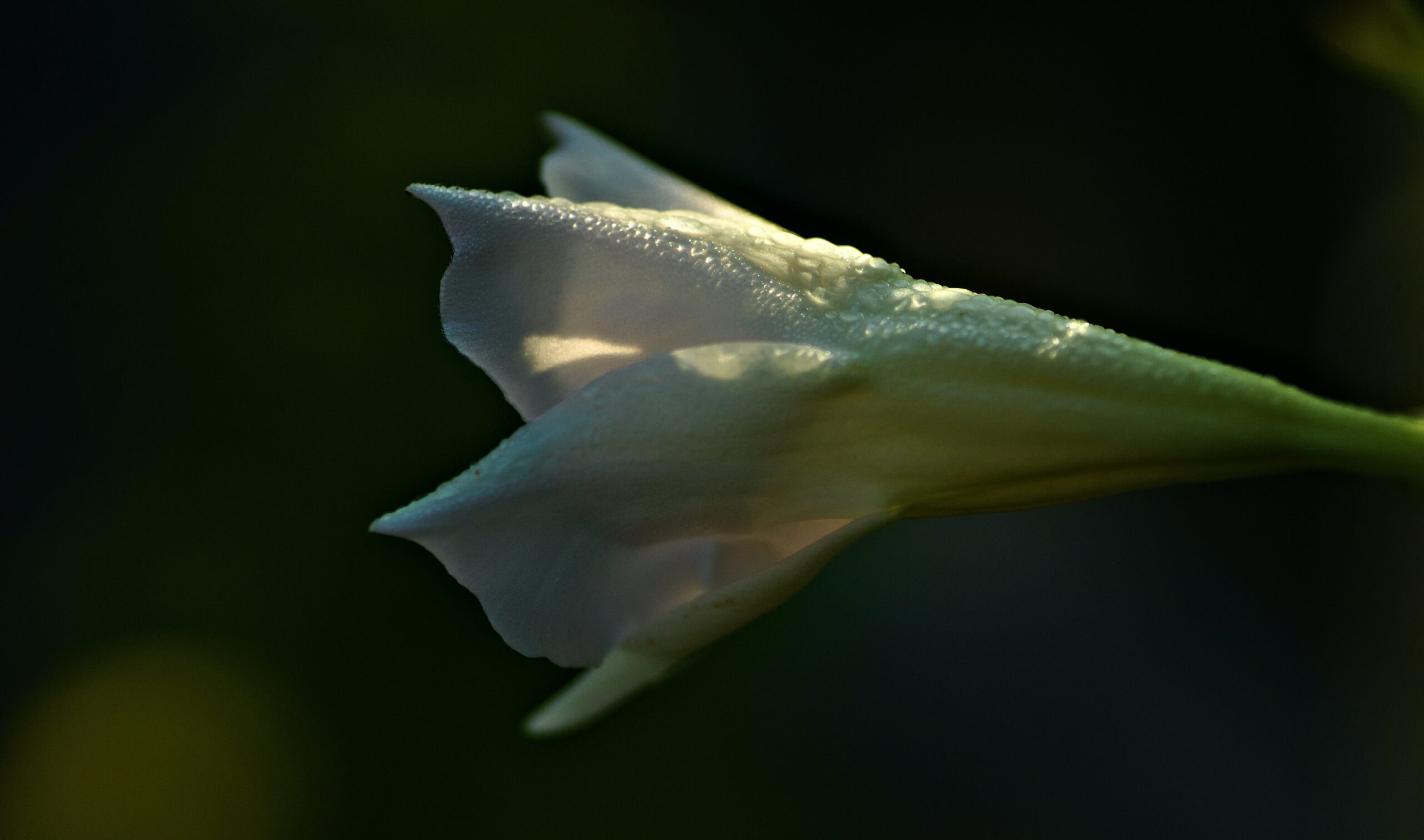Mandevilla is a beautiful and exotic flowering plant that can bring a splash of vibrant color to any garden. With its bright pink, white and yellow blossoms, it will instantly turn your outdoor space into a tropical paradise. But taking care of Mandevilla isn’t always easy — it requires the right amount of sunlight, water and nutrients to thrive.
If you’re looking for an attractive addition to your landscape that also requires little maintenance, Mandevilla is the perfect choice! This guide will teach you all about how to properly care for your Mandevilla and make sure it grows healthy and strong for many years to come.
From choosing the right soil mix to pruning and fertilizing, this guide has all the information you need to help your Mandevilla reach its full potential. With just a few simple steps, you can create an eye-catching display of colorful blooms in no time at all!
What Is A Mandevilla Plant?
Mandevilla plants are beautiful and versatile climbers that thrive in warm climates. They can add a touch of color to your garden with their vibrant, trumpet-shaped blooms. In the Caribbean, you can find wild mandevillas growing on trees and walls, where they provide a stunning display of pink, red, or white flowers.
You may have seen mandevillas in hanging baskets adorning patios and balconies throughout tropical regions. This plant is highly adaptable to container gardening and will produce its colorful blooms year-round under the right conditions. As long as you provide it with enough sunlight and moist soil, it will reward you with masses of beautiful blooms all summer long.
Mandevilla plants are relatively easy to care for and maintain; however, they do require some specific needs in order to thrive. These include adequate drainage in well-aerated soil, moderate temperatures between 50°F–90°F (10°C–32°C), consistent watering when the soil is dry to the touch, and plenty of bright but indirect sunlight for up to 8 hours a day. With these conditions met, your mandevilla should flower abundantly for months at a time!
Where Does The Mandevilla Plant Grow?
Did you know that Mandevilla plants are one of the most popular flowering vines in the world? These vibrant, deciduous plants grow prolifically and bring a splash of color to any outdoor garden. So, where does the Mandevilla plant grow? Let’s take a look.
The Mandevilla plant is native to Brazil, Argentina and other parts of South America. It’s found in tropical and subtropical climates and can be seen growing in many different climates around the world. Here are some tips on where it does best:
- The plant prefers an area with plenty of light;
- It requires moist soil that drains well;
- It likes temperatures between 60-90F (15-32C); and
- Humidity should be kept at levels above 50%.
By following these guidelines, you can create an ideal environment for your Mandevilla plant to thrive and bloom with beautiful flowers all year round. With a little bit of care, you can enjoy its beauty for many years to come. All that’s left now is choosing the right pot for your Mandevilla plant – but don’t worry! We’ve got you covered there too!
Choosing The Right Pot For Your Mandevilla Plant
When it comes to potting your mandevilla plant, the size of the pot and materials you choose are important. In fact, according to the American Society for Horticultural Science, over 70% of houseplants fail to thrive due to incorrect potting. This means that if you want your mandevilla plant to remain healthy and happy, it’s important that you choose the right pot!
Here are five key considerations when selecting a pot for your mandevilla:
- Size: Make sure the width of the pot is no more than twice the width of the root ball.
- Drainage: Ensure that there are drainage holes in your pot so excess water can escape.
- Materials: Look for a lightweight material such as plastic or terracotta.
- Color: Choose a color that complements your home décor.
- Location: Consider where you will be placing your plant before purchasing a pot.
When selecting a pot for your mandevilla plant, think about how big it needs to be and what kind of material would be best for its needs. Also consider factors like color, location and drainage too – these can all help make your mandevilla happy and healthy! With these tips in mind, you’ll be well on your way to successfully planting and caring for your mandevilla!
Planting And Caring For Mandevilla
Nurturing a mandevilla plant is an art that rewards you with vivid blooms, making it worth the effort. In this section, we will look at the planting and caring for your mandevilla to ensure that it thrives. To start off with a flourish, let us consider the unique needs of a mandevilla in terms of planting and caring for it.
Planting your mandevilla correctly is essential for its growth. Choose a pot with holes at the bottom to ensure enough drainage. When filling the pot with soil, select one that allows adequate aeration and moisture retention while also providing essential nutrients – such as compost or well-rotted manure mixed into regular potting mix – to keep your plant healthy. Plant your mandevilla in a sunny spot and water regularly.
Once planted, it is time to move on to caring for your mandevilla. As they are tropical plants, they require warmth and humidity which can be achieved by using a humidifier or simply misting them regularly with water. Fertilize your mandevilla every two weeks during its growing season (spring through fall) but do not fertilize during winter. Pruning is also necessary to maintain its shape and encourage new growth – prune back dead branches and stems after flowering season ends; this will help promote new blooms throughout springtime.
Next, we will discuss the watering requirements for mandevillas so they can thrive in their environment.
Watering Requirements For Mandevilla
When it comes to watering requirements for the majestic mandevilla, it’s a wonderment how much attention and care is needed. Absolutely overflowing with importance, this task is one that must be done with precision and thoughtfulness. Truly, it’s a necessity that surpasses all others when caring for this beautiful plant.
To get started, here is an astonishing list of 3 tips:
- Monitor the soil moisture levels daily;
- Water deeply but infrequently;
- Only water when the top inch of soil is dry.
When attending to these needs, there’s no denying the power of consistency. It will aid in keeping your mandevilla healthy and thriving by providing optimal growing conditions. By implementing a regular schedule for checking soil moisture levels, you’ll be able to accurately assess when your mandevilla needs water. In order to ensure success, make sure to only water when necessary as overwatering can cause root rot and other issues.
As soon as you’ve established a watering routine for your mandevilla, it will be time to move onto fertilizing in order to further promote healthy growth and blooms throughout the season.
Fertilizing Mandevilla
Fertilizing mandevilla is an important part of the plant’s care. Proper fertilization helps your plant to thrive, and can prevent issues such as nutrient deficiencies and stunted growth. Here are a few tips on keeping your mandevilla healthy with regular fertilization:
• Choose the right fertilizer: Select a balanced fertilizer that’s specially formulated for use with flowering plants. This ensures that your mandevilla will get the optimal combination of essential nutrients it needs to grow strong and healthy. You may need to adjust the amount or frequency of your fertilizer during different seasons or based on the size of your plant.
• Feed regularly: Fertilize your mandevilla once every two weeks during the growing season, from spring through early fall. During other months, you can feed it every 6-8 weeks.
• Don’t over-fertilize: Too much fertilizer can be harmful to your plants, so be sure to follow directions carefully when applying it. Over-fertilizing can cause leaf burn as well as root damage, so make sure you don’t apply too much at once!
By following these guidelines, you’ll give your mandevilla the nourishment it needs to stay healthy and beautiful all year long. With proper fertilization, you’ll find that your plant will look its best in no time at all! Now that you know how to keep your mandevilla looking great with proper fertilization, let’s move on to pruning and trimming techniques that will help keep it looking gorgeous for years to come.
Pruning And Trimming Mandevilla
Pruning and trimming a Mandevilla is like sculpting a masterpiece. It requires patience, skill, and creativity to create a beautiful piece of art. With careful pruning and trimming, you can help your Mandevilla to remain healthy and happy.
First, you should prune your Mandevilla in the early spring before new growth begins. You’ll want to remove any dead or damaged branches, as well as any that are crossing over each other or growing towards the center of the plant. This will help promote air circulation, which helps prevent disease and pests. You may also want to shape your plant by cutting back stems that are too long or that have become leggy.
After pruning in the spring, you can trim your Mandevilla throughout the growing season to maintain its shape and size. Make sure not to cut too much at once; instead work slowly over time so that you don’t shock the plant with drastic changes. Also avoid removing more than one-third of the total foliage when shaping your Mandevilla in order to keep it looking its best.
With regular maintenance, your Mandevilla will continue to thrive for many years to come. To keep it looking its best, controlling pests and diseases is key so take steps now such as selecting disease-resistant varieties or providing proper care for prevention!
Controlling Pests And Diseases Of Mandevilla
Controlling pests and diseases of mandevilla is an important part of keeping your plant healthy. There are a few common pests, such as aphids and mealybugs, which can affect the health of your mandevilla. You’ll also want to watch out for disease, including fungal issues like powdery mildew. Here’s what you need to know about controlling these pests and diseases.
First off, prevention is key. Keep your plants healthy by providing them with good airflow and plenty of sunlight in order to discourage pest infestations and disease. Additionally, regularly check your plants for signs of insects or other problems. If you do find something, act quickly to get rid of it before it causes too much damage.
When it comes to handling pest infestations or fungal issues, there are a few options depending on the severity of the problem. For minor infestations, you can use natural methods like spraying horticultural oil or insecticidal soap on the leaves or applying neem oil directly to the bugs themselves. For more serious cases, you may need to use chemical treatments such as fungicides or insecticides – but only as a last resort after trying all other methods first!
No matter what method you choose for controlling pests and diseases in your mandevilla plants, always make sure that you follow instructions carefully when applying any chemicals or treatments. With proper care and maintenance, you can keep your mandevillas healthy and looking their best! By addressing any potential issues quickly, you can avoid common problems with mandevilla before they become too severe.
Common Problems With Mandevilla
When it comes to mandevilla, there are certain common problems you may encounter. From pests and diseases to soil issues, these can all cause stress on your plant. In this section, we’ll explore some of the most frequent issues to be aware of when caring for your mandevilla.
Pests are one of the biggest problems when growing mandevilla. Spider mites, mealybugs and whiteflies are the most common culprits. To prevent infestations, keep an eye out for any signs of damage or discoloration on your plant’s leaves. If you do spot something, treat with a pesticide as soon as possible before it spreads further.
Another common issue is overwatering – too much water can lead to root rot and other soil-borne diseases that can damage or even kill your mandevilla. Always check the moisture level in the soil before watering, and if it’s still damp then hold off until it dries out a bit more. If you do find yourself in a situation where your mandevilla has been overwatered, try repotting it in fresh potting mix as soon as possible to give it a chance at recovery.
These issues can cause lots of stress for both you and your mandevilla, but if you pay attention and take steps to prevent them then you’ll have a healthy plant that blooms beautifully year after year! With proper care and attention, you’re sure to keep your mandevilla looking its best – now let’s move onto how to get it through those cold winter months…
Overwintering Mandevilla
Wow! Overwintering mandevilla is a Herculean task – but it’s doable! It takes a lot of effort and dedication, but with the right care and maintenance, you can keep these plants alive through the cold months. Let’s learn how to successfully get through this potentially daunting task.
First off, you’ll need to prepare your plant for the cold season. Start by bringing them indoors where they will be safe from frost or snow. Make sure to check for any pests that may have taken up residence on the leaves or stems before bringing them inside. Then, place your plant in an area that receives bright indirect sunlight for about 8 hours each day. A cool room with temperatures between 40-55°F is ideal for keeping your mandevilla happy during the winter months.
Finally, water sparingly during this time so as not to drown the roots. If you’re worried about overwatering, it’s best to let the top inch of soil dry out before watering again. Give your plant some liquid fertilizer every few weeks to help it stay healthy and resilient until springtime rolls around again.
With these tips in mind, you should be able to successfully overwinter your mandevilla plants without too much trouble! Now let’s move on to propagating mandevilla…
Propagating Mandevilla
Mandevilla is a symbol of resilience and hope, with its fiery red flowers that bloom even in the harshest conditions. It’s no surprise, then, that propagating these beautiful plants can be a rewarding experience. Whether you’re looking to add some color to your home or give a friend a special gift, propagating mandevilla is an easy and enjoyable way to do it.
Propagating mandevilla is simple and doesn’t require any specialized tools. All you need is a healthy stem cutting from an existing plant, some soil mix and a pot for the cuttings to take root in. After removing the lower leaves from the cutting, dip it in rooting hormone for better success rate and then place it in the pot filled with soil mix. Keep the pot damp until new growth appears – this typically happens within 2-4 weeks.
Once you have successfully propagated your mandevilla, keep an eye out for pests like aphids or mealybugs which may harm your new plants. With proper care and regular watering, your new mandevillas will soon start blooming brightly just like their parent plant! Now that you know how to propagate them, why not grow them in a hanging basket?
Growing Mandevilla In A Hanging Basket
It’s long been theorized that growing plants in hanging baskets can give them the extra space and light they need to flourish. Could this be true for mandevilla, too? Let’s investigate.
Hanging baskets are an ideal way to grow mandevilla if you don’t have much ground space, like on a balcony. They allow the plant to spread out and bloom more profusely than it would in other containers. To get the most out of your basket, use a large one that is at least 16 inches in diameter and has plenty of drainage holes at the bottom. Fill it with a quality potting soil, then add compost or aged manure for nutrition.
When planting mandevilla in your basket, make sure to keep each eye at least 2 inches apart from each other for best results. Water thoroughly after planting and provide bright indirect light – but not direct sunlight – for optimal growth. During hot summer days, you may need to water your mandevilla twice daily so it doesn’t dry out; however, make sure to avoid overwatering as this can cause root rot.
By following these tips on how to care for your hanging mandevilla basket, you can enjoy vibrant blooms all season long! With just a little bit of TLC and attention, you’ll soon have a beautiful display of colorful flowers that will bring joy to any outdoor living space.
Growing Mandevilla As Ground Cover
Mandevilla is a beautiful addition to any garden and can even be used as ground cover. Growing mandevilla as ground cover will add some vibrant color and texture to your landscape. It’s an evergreen perennial that does well in hot, humid climates and adds a tropical feel to the yard.
When selecting mandevilla for ground cover, look for varieties with long vines. These will give you more coverage. Make sure the spot you have chosen has good drainage and full sun exposure, as these plants need at least six hours of direct sunlight each day to thrive. Be sure to water your mandevilla regularly, about once or twice a week, and feed it with a balanced fertilizer every month during the growing season (May through August).
Mandevilla is easy to care for when planted in the right conditions. With regular watering, fertilizing, and pruning when necessary, your mandevilla should stay healthy and continue to provide beautiful ground cover year after year. Now that you know how to grow mandevilla as ground cover, let’s explore using it in containers!
Using Mandevilla In Containers
If you’re looking to add some beautiful blooms to your outdoor garden, then consider using mandevilla in containers. Surprisingly, this colorful flower is among the top 10 most popular flowering plants in the United States. Here are four reasons why you should use mandevilla in containers:
- It’s a fast-growing plant that can be easily trained and pruned into any shape or size desired.
- It’s low-maintenance and requires little water or fertilizer once it’s established.
- Its vibrant colors and sweet fragrances will attract hummingbirds, butterflies, and bees to your garden.
- It’s drought tolerant, so you don’t have to worry about it wilting during hot summer days.
Using mandevilla in containers is an excellent way to add color and texture to any outdoor space. Plus, since they thrive best in warm climates, they can bring life to container gardens all year round. They not only make for stunning displays on balconies and patios but also add a bit of luxury when planted near pools or entryways. With their low-maintenance nature and easy training abilities, there’s no limit as to where these gorgeous flowers can go! Now that you know some of the benefits of using mandevilla in containers, let’s look at some tips for growing healthy mandevillas.
Tips For Growing Healthy Mandevilla
It’s no surprise that many gardeners are interested in growing mandevilla. After all, it’s an attractive flowering plant with a showy display. But is it actually feasible to grow mandevilla in containers? Yes! In fact, growing healthy mandevilla plants in containers is relatively easy with the right tips and advice. Here are 15 tips for growing healthy mandevilla.
First of all, provide your mandevilla with plenty of sunlight and warmth. If you’re using a container for your plant, make sure to place it where it will get at least 6 hours of full sun each day. Additionally, be sure to provide enough water and fertilizer – but not too much – for your mandevilla. Too little or too much of either can lead to poor growth and even plant death.
Secondly, use a potting soil mix specifically designed for flowering plants like mandevilla when planting your container-grown mandevillas. This will help ensure proper drainage as well as adequate nutrients for growth and flower production. Also, keep an eye on pests such as aphids or spider mites that may infest the foliage or flowers of the plant, as they can cause significant damage if left untreated. Here are four more tips to remember when caring for your mandevillas:
- Prune regularly to encourage new growth and prevent leggy branches;
- Feed your plants every other week during the growing season with a balanced liquid fertilizer;
- Allow the top inch or two of soil to dry out before watering;
- To prevent rot, be sure to use a pot with adequate drainage holes in the bottom.
These simple steps will help you get the most out of your container-grown mandevillas while also keeping them healthy and happy. With some careful attention and these helpful tips on hand, you’ll be able to enjoy beautiful blooms from your container-grown mandevillas all season long!
Frequently Asked Questions
How Do I Know When To Repot My Mandevilla Plant?
The lush, bright colors of a mandevilla plant are enough to make anyone’s heart soar. It’s like a little piece of paradise in your home, drawing you in with its beauty and grace. But how do you know when it’s time to repot your beloved mandevilla?
The answer lies in the roots – if they’ve become too crowded or started growing over the edge of the pot, it’s time for a change. The best way to check is by gently lifting the plant out of its pot and examining the root system. If you can see lots of white roots that have no soil around them, it’s time for a bigger pot!
To give your mandevilla the best chance of continued growth, choose a pot that is slightly larger than its current one – this will give those new roots plenty of room to stretch out. Make sure you choose one with drainage holes at the bottom so excess water can escape. You’ll also want to use a light, well-draining soil mix such as a succulent or cactus mix. Finally, water your newly potted mandevilla deeply but not frequently – this will give it enough moisture while also allowing it to dry out between waterings.
With these simple steps, your mandevilla should be happily growing in its new home! In no time at all those beautiful blooms will be back again and you’ll be able to bask in their splendor once more.
Is It Possible To Overwinter My Mandevilla Plant Indoors?
A Mandevilla plant is an exotic beauty, with lush foliage and vibrant flowers that bring a touch of the Tropics to any outdoor area. For those of us who don’t live in a warm climate, it can be tricky to figure out how to keep our Mandevillas healthy through the winter months. Is it possible to overwinter my Mandevilla indoors? Let’s explore this question and find out!
First off, let’s understand what it means to overwinter a plant. Overwintering is the practice of keeping plants alive during colder months by providing them with special care and protection from cold temperatures. This can involve bringing plants indoors or taking other measures such as mulching or covering them with frost cloths.
When deciding whether or not to overwinter your Mandevilla, there are several factors you should consider: • The temperature where you live – Mandevillas need temperatures between 60-80°F (15-27°C). • The amount of light available – these plants require at least 6 hours of direct sunlight per day. • The size of your pot – if the pot is too small, over wintering may not be feasible due to lack of space for root growth. • Your ability to provide adequate humidity – indoor air can be drier than outdoor air which could cause problems for your plant if not addressed. • The age and health of your plant – older or unhealthy plants may not survive being brought indoors for long periods.
In short, overwintering a Mandevilla can be done but requires careful consideration and thoughtful preparation before making the move indoors. If you feel up for the challenge, take some time to research best practices for indoor planting so that you can give your Mandevilla the best chance of surviving hibernation season!
How Often Should I Fertilize My Mandevilla Plant?
Fertilizing a mandevilla plant is like giving your car an oil change—it’s essential for keeping it running smoothly and preventing long-term damage. Without the right nutrients, mandevillas can become weak, leggy, and prone to diseases and pests. That’s why understanding when and how often to fertilize is key for maintaining a healthy plant.
Fertilizer has three main components: nitrogen, phosphorus, and potassium. Each of these helps the plant in different ways—nitrogen helps with leaf growth; phosphorus encourages root growth; potassium improves stem strength. When picking a fertilizer, look for one that specifically lists these three ingredients on the label. Fertilizers formulated specifically for mandevillas are also available as well as those designed for other tropical plants.
When it comes to application frequency, once every two weeks during the growing season (spring through fall) should be enough. During this time, use 1/2 teaspoon of 10-30-10 fertilizer per gallon of water. In winter months, reduce feeding to once a month or even just twice during the entire season. And if you notice yellowing leaves or stunted growth at any point in time, increase your fertilizer schedule slightly until things improve.
With proper care and fertilization throughout the year, your mandevilla plant will thrive—giving you lush foliage and vibrant blooms all year round!
What Type Of Soil Is Best For Growing Mandevilla?
Growing beautiful and vibrant Mandevilla plants is not difficult, but it does require the right soil. Knowing what type of soil your Mandevilla prefers will help you ensure that it receives the best care possible and continues to thrive.
When selecting soil for your Mandevilla, keep in mind that it prefers well-draining soil with a light texture. A commercial potting mix with added sand or perlite works well and will provide ample drainage for your plant. Additionally, some gardeners like to add an organic mulch such as compost or peat moss to improve the overall quality of the soil.
It’s important that you keep the soil moist but not soggy since overwatering can lead to root rot. To help retain moisture in the soil, consider adding a top layer of mulch to your potted mandevillas. This will also help suppress weeds so they don’t compete with your plant for nutrients and water. With proper care, your Mandevilla will continue to bloom beautifully throughout the growing season!
How Do I Encourage Flowering In My Mandevilla Plant?
Are you looking for ways to maximize the flowering of your mandevilla plant? If so, then you’ve come to the right place. For this vibrant tropical plant, it’s essential to create the perfect environment to encourage blooming. With just a few simple steps, you can have your mandevilla flourishing with beautiful flowers all season long.
First, make sure that the soil your mandevilla is planted in is well-draining. This will help prevent root rot and keep it healthy. Use a light mix of potting soil that’s rich in organic matter and add perlite or vermiculite to improve drainage. It’s also important to give your mandevilla plenty of sunlight – 6 or more hours per day is ideal – as this helps promote blooming.
Next, be sure to water regularly but not too frequently – overwatering can cause root rot and stunt growth. When watering, soak the soil until water runs out of the pot’s bottom drainage holes. To further encourage flowering, use a balanced fertilizer every two weeks during its growing season (spring through fall). Lastly, prune away dead or unhealthy stems and leaves – this will help direct energy into flowering instead of foliage growth.
By following these tips on caring for your mandevilla, you’ll be able to enjoy its bright and colorful flowers all season long! Not only will it bring beauty and color to your garden or patio space but it can also attract beneficial insects like butterflies and hummingbirds into your yard.
Conclusion
In conclusion, Mandevilla plants are a beautiful addition to any home or garden. Proper care and knowledge of their needs is essential for a healthy, thriving plant. Knowing when to repot, how often to fertilize, and the best soil to use are all important steps in the growing process. In addition, providing adequate sunlight and humidity will encourage blooming. With proper care, your Mandevilla plant will be sure to put on a dazzling show of color like fireworks in the night sky.
Mandevilla plants can provide a wonderful addition to any outdoor space with their vibrant colors and delicate petals. Gardeners should take care to provide them with plenty of sunshine and humidity while ensuring that they are not over-watered or under-fertilized. When properly cared for, these plants will reward you with an array of beautiful blooms like a bouquet of flowers straight from heaven.
Overall, Mandevilla plants are easy to take care of and make an excellent choice for both experienced gardeners and beginners alike. With patience and dedication, your Mandevilla plant will bring a touch of beauty into your home or garden that will last season after season like a never-ending rainbow.





























